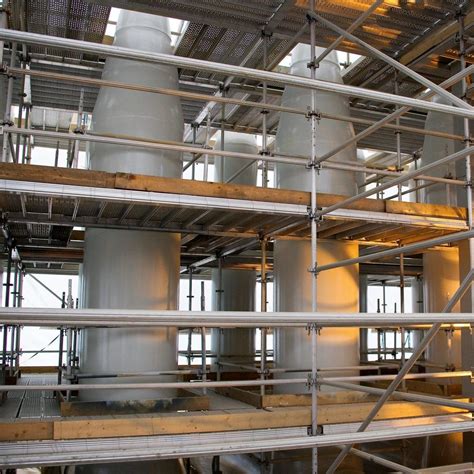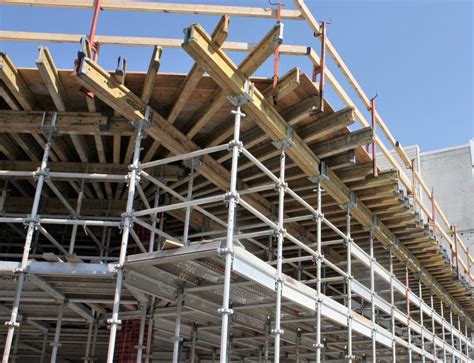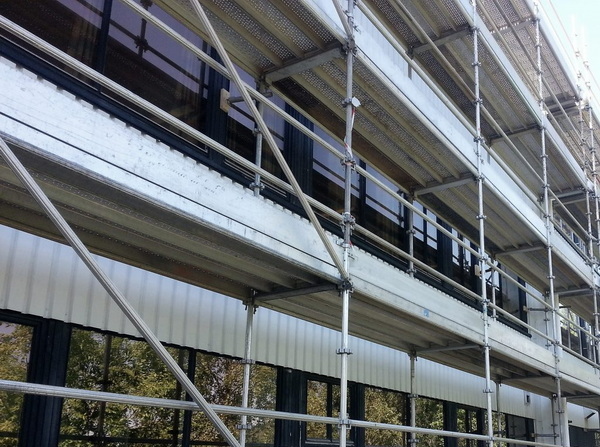Content Menu
● Defining "Harsh": The Scaffolding Gauntlet
>> 1. Extreme Temperature Variations
>> 2. Chemical and Industrial Exposure
>> 3. Coastal and Marine Conditions
>> 4. High Altitude and UV Exposure
>> 5. Remote and Difficult Terrain
● The Alustar Scaffolding System: Engineered for Resilience
>> 1. High-Strength Aluminum Alloy
>> 2. Advanced Welding and Fabrication
>> 3. Protective Coatings and Finishes
>> 4. Modular Design for Adaptability
>> 5. Secure Locking Mechanisms
>> 6. Integrated Safety Features
>> 7. Wind Load Resistance
>> 8. Load-Bearing Capacity
● Alustar in Action: Case Studies in Harsh Environments
>> 1. Offshore Oil Platform Maintenance
>> 2. Chemical Plant Construction
>> 3. Arctic Pipeline Construction
>> 4. Desert Power Plant Maintenance
● Choosing Alustar: A Checklist for Harsh Environments
● Addressing Common Concerns About Aluminum Scaffolding
>> 1. Cost
>> 2. Strength
>> 3. Conductivity
● Conclusion
● FAQ
>> 1. What types of harsh environments is the Alustar Scaffolding System suitable for?
>> 2. How does the Alustar Scaffolding System compare to steel scaffolding in terms of durability in harsh environments?
>> 3. What safety certifications does the Alustar Scaffolding System have?
>> 4. How easy is it to assemble and disassemble the Alustar Scaffolding System in challenging terrain?
>> 5. What is the typical lifespan of the Alustar Scaffolding System in harsh environments?
● Citations:
For any construction or maintenance project venturing into environments marked by relentless weather patterns, corrosive substances, or extreme temperatures, the selection of scaffolding is a critical decision. The scaffolding must not only ensure the safety and efficiency of the workforce but also withstand the environmental onslaught to guarantee structural integrity. This is where the Alustar Scaffolding System steps in, designed specifically for harsh environments where lesser systems would falter.

Defining "Harsh": The Scaffolding Gauntlet
Before diving into the Alustar Scaffolding System, it's important to define what "harsh environments" entail. The term encompasses a range of challenging conditions that can degrade materials and compromise structural integrity.
1. Extreme Temperature Variations
Extreme temperature fluctuations, whether cycles of freezing and thawing, or the stark transition from blazing sun to chilling night, exert tremendous stress on scaffolding materials. The expansion and contraction can weaken joints, cause material fatigue, and ultimately, lead to structural failure.
2. Chemical and Industrial Exposure
Many industrial settings expose scaffolding to corrosive chemicals, acids, solvents, and airborne pollutants. These substances can react with scaffolding materials, leading to rapid degradation and reducing their load-bearing capacity.
3. Coastal and Marine Conditions
The combination of high humidity, saltwater spray, and constant wind makes coastal and marine environments exceptionally harsh. Saltwater accelerates corrosion in many metals, while constant wind adds stress on the scaffolding's structure.
4. High Altitude and UV Exposure
At high altitudes, scaffolding is subjected to increased ultraviolet (UV) radiation and thinner air. UV radiation can degrade certain plastics and coatings used in scaffolding systems, while thinner air can affect the performance of pneumatic tools and equipment used in assembly.
5. Remote and Difficult Terrain
Finally, "harsh" can also refer to the sheer difficulty of accessing and setting up scaffolding in remote or uneven terrain. The system must be easy to transport, assemble, and adapt to challenging site conditions.
The Alustar Scaffolding System: Engineered for Resilience
The Alustar Scaffolding System is designed with these harsh conditions in mind. Every aspect of the system, from material selection to manufacturing processes, is optimized for strength, durability, and long-term performance.
1. High-Strength Aluminum Alloy
The core of the Alustar system is its high-strength aluminum alloy. This alloy is carefully selected for its exceptional strength-to-weight ratio, corrosion resistance, and ability to withstand temperature variations.
The aluminum alloy used in the Alustar system is significantly lighter than steel, making it easier to handle and transport, but it still provides the strength and stability needed for demanding applications.
2. Advanced Welding and Fabrication
The components of the Alustar system are joined using advanced welding and fabrication techniques. Skilled technicians use specialized equipment to create strong, durable, and corrosion-resistant welds.
These welds are carefully inspected to ensure that they meet the highest standards of quality and reliability.
3. Protective Coatings and Finishes
To further enhance its corrosion resistance, the Alustar Scaffolding System is treated with protective coatings and finishes. These coatings act as a barrier between the aluminum and the environment, preventing corrosion and extending the lifespan of the scaffolding.
The specific coatings used on the Alustar system are carefully selected to resist the types of chemicals and pollutants commonly found in industrial and marine environments.
4. Modular Design for Adaptability
The Alustar system features a modular design that allows it to be easily adapted to different project requirements. Components can be quickly assembled and disassembled, making the system ideal for both short-term and long-term projects.
The modular design also makes it easy to transport the Alustar system to remote locations or challenging terrain.
5. Secure Locking Mechanisms
The Alustar system features secure locking mechanisms that ensure the stability and safety of the scaffolding. These mechanisms are designed to withstand high loads and prevent accidental disconnections.
The locking mechanisms are also easy to use, allowing workers to quickly and safely assemble and disassemble the scaffolding.
6. Integrated Safety Features
Safety is paramount in the design of the Alustar Scaffolding System. The system includes a range of integrated safety features, such as non-slip platforms, guardrails, and toe boards.
These features help to prevent falls and protect workers from dropped objects.
7. Wind Load Resistance
The Alustar Scaffolding System is engineered to withstand high wind loads. The system's design and construction help to minimize wind resistance, and its secure locking mechanisms prevent components from being dislodged by strong winds.
8. Load-Bearing Capacity
The Alustar Scaffolding System is designed to support heavy loads. The system's high-strength aluminum alloy construction and reinforced design provide exceptional load-bearing capacity.

Alustar in Action: Case Studies in Harsh Environments
To illustrate the Alustar Scaffolding System's performance in harsh environments, let's examine a few case studies:
1. Offshore Oil Platform Maintenance
Offshore oil platforms are exposed to some of the harshest conditions on Earth, including saltwater spray, high winds, and constant wave action. The Alustar Scaffolding System has been used extensively for maintenance and repair work on these platforms.
Its corrosion resistance and wind load resistance make it an ideal choice for this demanding application.
2. Chemical Plant Construction
Chemical plants often expose scaffolding to corrosive chemicals and pollutants. The Alustar Scaffolding System's protective coatings and chemical resistance make it a safe and reliable choice for construction and maintenance work in these environments.
3. Arctic Pipeline Construction
Constructing pipelines in the arctic requires scaffolding that can withstand extreme cold and ice buildup. The Alustar Scaffolding System's high-strength aluminum alloy construction and weather-resistant design make it suitable for this challenging application.
4. Desert Power Plant Maintenance
Desert power plants are exposed to extreme heat and UV radiation. The Alustar Scaffolding System's UV-resistant coatings and ability to withstand high temperatures make it a dependable choice for maintenance and repair work in these environments.
Choosing Alustar: A Checklist for Harsh Environments
When selecting a scaffolding system for harsh environments, consider the following factors:
- Material: Is the scaffolding constructed from a corrosion-resistant material, such as aluminum?
- Welding: Are the welds strong, durable, and corrosion-resistant?
- Coatings: Does the scaffolding have protective coatings to resist chemicals, UV radiation, and saltwater?
- Design: Is the scaffolding designed to withstand high winds and heavy loads?
- Safety: Does the scaffolding have integrated safety features, such as non-slip platforms, guardrails, and toe boards?
- Compliance: Does the scaffolding meet all relevant industry standards and regulations?
- Maintenance: How much maintenance is required to keep the scaffolding in good condition?
- Adaptability: Can the scaffolding be easily adapted to different project requirements and challenging site conditions?
The Alustar Scaffolding System excels in all of these areas, making it the ideal choice for projects in harsh environments.
Addressing Common Concerns About Aluminum Scaffolding
While aluminum scaffolding offers many advantages, some concerns are frequently raised:
1. Cost
Aluminum scaffolding can be more expensive than steel scaffolding. However, the long-term cost savings from reduced maintenance, faster assembly, and increased durability often outweigh the initial investment.
2. Strength
Some people worry that aluminum is not as strong as steel. While aluminum is lighter than steel, high-strength aluminum alloys can provide comparable strength for many applications.
The Alustar Scaffolding System is designed with a high-strength aluminum alloy that provides exceptional load-bearing capacity.
3. Conductivity
Aluminum is a good conductor of electricity. When working near power lines, extra precautions must be taken to prevent electrical hazards.
However, this is a consideration for any metallic scaffolding system, and appropriate safety measures can mitigate the risk.
Conclusion
In summary, the Alustar Scaffolding System is a robust, durable, and reliable solution for projects in harsh environments. Its high-strength aluminum alloy construction, advanced welding techniques, protective coatings, and integrated safety features make it an ideal choice for demanding applications where lesser systems would fail. By choosing the Alustar system, companies can ensure the safety of their workers, the efficiency of their projects, and the long-term performance of their scaffolding. Whether facing extreme temperatures, corrosive substances, high winds, or challenging terrain, the Alustar Scaffolding System is engineered to stand strong and deliver exceptional results.

FAQ
1. What types of harsh environments is the Alustar Scaffolding System suitable for?
The Alustar Scaffolding System is suitable for a wide range of harsh environments, including coastal and marine environments, chemical and industrial environments, arctic and subarctic regions, and desert environments. Its corrosion resistance, weather resistance, and high strength make it a versatile choice for demanding applications.
2. How does the Alustar Scaffolding System compare to steel scaffolding in terms of durability in harsh environments?
The Alustar Scaffolding System offers significant advantages over steel scaffolding in harsh environments. Aluminum is naturally corrosion-resistant, while steel is prone to rusting and degradation. The Alustar system also features protective coatings that further enhance its durability.
3. What safety certifications does the Alustar Scaffolding System have?
The Alustar Scaffolding System is designed and manufactured to meet or exceed all relevant industry standards and regulations. Contact the manufacturer or supplier for specific certification information.
4. How easy is it to assemble and disassemble the Alustar Scaffolding System in challenging terrain?
The Alustar Scaffolding System's modular design and lightweight aluminum construction make it relatively easy to assemble and disassemble in challenging terrain. The system can be quickly transported and set up, even in remote locations.
5. What is the typical lifespan of the Alustar Scaffolding System in harsh environments?
The lifespan of the Alustar Scaffolding System depends on the specific environmental conditions and the level of maintenance it receives. However, with proper care and maintenance, the system can last for many years, even in harsh environments.
Citations:
[1] https://pplx-res.cloudinary.com/image/upload/v1740571215/user_uploads/CeSuPcovqtdMSCe/image.jpg
[2] https://pplx-res.cloudinary.com/image/upload/v1740571215/user_uploads/rblRsdJYvqCaenH/image.jpg






















